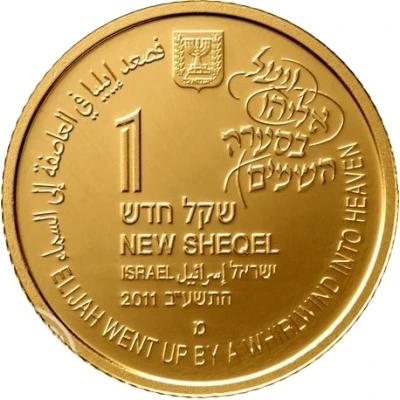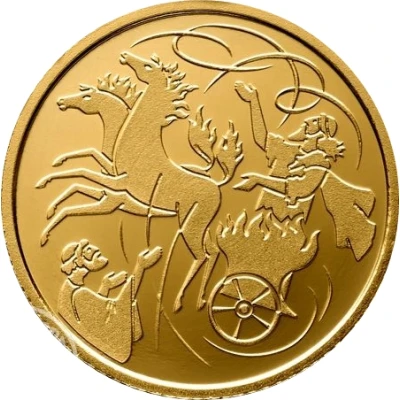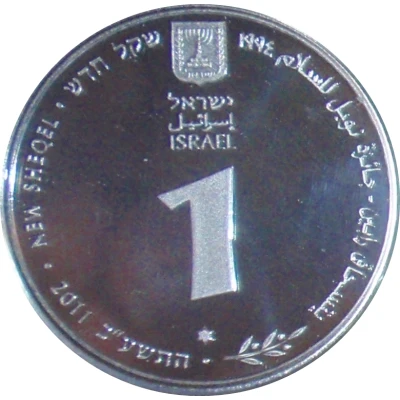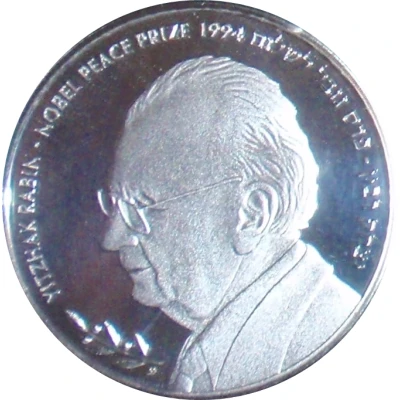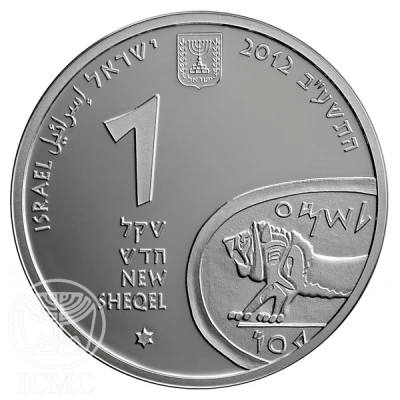
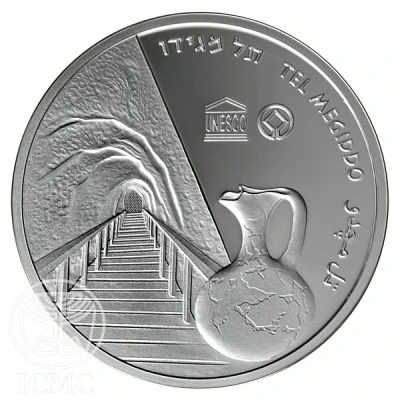

© Israel Coins and Medals Corp.
1 New Sheqel Tel Megiddo
5772 (2012) year| Silver (.925) | 14.40 g | 30.0 mm |
| Issuer | Israel |
|---|---|
| Period | State of Israel (1948-date) |
| Type | Non-circulating coin |
| Year | 5772 (2012) |
| Calendar | Hebrew |
| Value | 1 New Sheqel 1 ILS = USD 0.26 |
| Currency | New Shekel (1986-date) |
| Composition | Silver (.925) |
| Weight | 14.40 g |
| Diameter | 30.0 mm |
| Shape | Round |
| Technique | Milled |
| Orientation | Medal alignment ↑↑ |
| Updated | 2024-10-05 |
| Numista | N#88719 |
|---|---|
| Rarity index | 94% |
Reverse
The tunnel of the water system at Megiddo, a jug found in an archeological dig at Megiddo, "Tel Megiddo" in English, Hebrew and Arabic, UNESCO World Heritage Site Emblem and the Israel UNESCO Emblem.
Scripts: Arabic, Hebrew, Latin
Lettering:
תל מגידו TEL MEGIDDO تل مچدو
UNESCO
Engravers: Osnat Eshel, Tidhar Dagan
Edge
Plain
Comment
Megiddo was already an important city in the Bronze Age (Canaanite period) and in the Iron Age (Israelite period). Located at a strategic point on fertile land, Megiddo guarded the pass to an ancient trade route connecting Egypt and Assyria. For this reason, the city was desired by many ruling powers and was the site of frequent battles. Among its conquerors were Pharoahs of ancient Egypt, the Israelite and Judean Kings, as well as Assyria. Towards the end of the 7th century BCE, at the Battle of Megiddo between Egypt and the Kingdom of Judah, Pharoah Neco, captured the city from the Assyrians and slew King Josiah of Judah, to the astonishment of the people of Israel.Tel (Settlement Mound) Megiddo is one the most important and impressive archeological sites in the Land of Israel. Its 20 archeological strata contain the remains of some 30 different cities, spanning a period of over 4,000 years. Excavations which have been carried out since 1903, have revealed an area of worship, a large palace with jewels and ivories, stables from the time of King Ahab (I Kings 16-22, 9th Century BCE) and an 8th century BCE seal with a roaring lion, belonging to Shema, the servant of King Jeroboam II. In addition and most impressive of all the findings, is a fine water system dating from the Israelite period. Initiated in the 10th century BCE, when Megiddo was one of three royal centers, the elaborate water system safeguarded the city's water supply in times of siege. It consisted of a 25 meter-deep vertical shaft and a subterranean 80 meter-long horizontal tunnel, which had been painstakingly cut in the rock on the western side of the city, making it possible to reach the spring outside the city walls without being seen by the enemy.
Megiddo is mentioned 11 times in the Bible. The Prophet Zechariah refers to Megiddo as Megiddon and continues with an apocalyptic description of a world war. In the New Testament, Megiddo is referred to as "Armageddon"and according to Christian tradition (Book of Revelation), it is here where the final battle will take place between good and evil forces, at the end of days.
Representing an interchange of human values throughout the ancient near-east and being a testimony to an ancient civilization with a high level of engineering and technology, Tel Megiddo was recognized by UNESCO as a World Heritage Site, in 2005.
Now a National Park, Tel Megiddo is visited by thousands, including Christian pilgrims to the Holy Land.
Interesting fact
The Tel Megiddo coin depicts an ancient Egyptian relief of a chariot battle on one side and the effigy of a lion on the other, symbolizing the biblical prophecy of the war of Gog and Magog, which is believed to take place at the end of days in the Jezreel Valley, where Megiddo is located.
Price
| Date | Mintage | VG | F | VF | XF | AU | UNC |
|---|---|---|---|---|---|---|---|
| 5772 (2012) ✡ | 1800 | - | - | - | - | - | - |
Values in the table are based on evaluations by sales realized on Internet platforms. They serve as an indication only for 1 New Sheqel (Tel Megiddo) 5772 (2012) coin.
